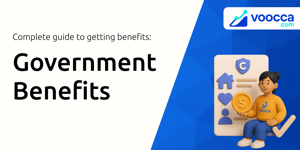
In a world where every dollar seems earmarked for bills and obligations, it’s easy to push fun to the bottom of the list. Yet, true financial well-being encompasses more than just numbers in a spreadsheet. It thrives when you weave joy and relaxation into the very fabric of your money plan.
Focusing solely on saving and investing can lead to exhaustion, stress, and a sense of deprivation. When life feels like a constant series of sacrifices, motivation wanes and burnout looms. By carving out room for enjoyment, you preserve mental health, foster fulfillment, and build sustainable habits.
Integrating leisure into your financial strategy isn’t a frivolous add-on—it’s an essential ingredient for a holistic life. Studies show that people who budget for both needs and wants report higher overall satisfaction and stick to their plans longer.
Every robust plan starts with a clear understanding of where your money flows. In 2025, shifting economic conditions demand fresh eyes on your finances.
Begin by conducting an annual review. Update your budget based on any salary changes, cost-of-living adjustments, or new expenses. Ensure you have specific lines for essentials, savings goals, debt payments, and yes—leisure.
Next, fortify your emergency fund. Aim for three to six months’ worth of expenses in a high-yield savings or money market account. In a rising interest rate environment, these accounts can offer meaningful growth with minimal risk.
Debt management remains critical. List your obligations—credit cards, student loans, mortgages—and apply the highest payments to the debt with the steepest rate. If refinance opportunities arise in 2025, consider consolidating high-interest balances to free up cash for both security and play.
Finally, review your investment portfolio. A diversified mix of equities, bonds, and emerging sectors like renewable energy or artificial intelligence can help you achieve growth while managing volatility. Rebalance at least annually or after significant market moves to maintain alignment with your risk tolerance.
Life shifts—marriage, parenthood, home purchase or career changes—can reshape your entire financial landscape. Each milestone often triggers new tax brackets, insurance needs, or benefit choices.
Before a big step, map out the financial implications: potential employer benefit changes, updated filing status, and altered cash flow. Revisit goals and adjust your budget categories, ensuring that fun funds scale with these transitions rather than vanish.
With a new administration on the horizon, tax rules may shift. Stay informed about proposals affecting income thresholds, capital gains rates, or retirement contribution limits. Even minor changes can influence your year-end tax bill and cash-flow planning.
Inflation remains a headwind in 2025; anticipate rising prices for everything from groceries to travel. Factor in potential insurance premium hikes as part of your risk-management costs, and consider tax-efficient strategies like maximizing health savings accounts or tax-advantaged retirement vehicles.
Allocating a dedicated leisure budget transforms spontaneous guilt into intentional delight. Treat your fun fund as a non-negotiable category—just like utilities or groceries.
By defining and automating this allocation, you avoid the common pitfall of “mysteriously” overspending after a successful saving streak. Instead, you enjoy with purpose and clarity.
The true art of financial planning lies in balancing the needs of today with the goals of tomorrow. Imagine funding a memorable weekend escape while still contributing to retirement or education savings.
One practical approach is to automate transfers to both your emergency account and your leisure account on payday. This ensures consistent progress without constant decision-making.
This framework offers both structure and flexibility, allowing you to prioritize joy alongside long-term savings and keep your plan within healthy boundaries.
Unexpected events—a layoff, medical crisis, or sudden trip cancellation—can derail even the best-laid plans. Identifying risks and preparing mitigation strategies is crucial to maintaining both security and spontaneity.
By having these contingencies in place, you protect your financial base without sacrificing the excitement of new experiences.
Leverage technology and professional expertise to streamline planning.
Consult financial advisors or tax professionals for major decisions. Their guidance can help you navigate complex policy changes and optimize strategies for 2025 and beyond.
Money is deeply emotional. Recognizing that shared experiences often outlast material purchases can shift your spending patterns toward greater happiness. Couples and families who plan adventures together build memories that compound like interest over time.
Adopt value-based spending priorities by asking: “Will this bring me lasting joy?” When you free yourself from the fear of missing out, you focus on what resonates most deeply—and spend accordingly.
Even the best plan needs fine-tuning. Schedule quarterly or semi-annual financial checkups to assess progress, celebrate achievements, and recalibrate for evolving priorities.
By committing to regular reviews, you ensure that both security and fun remain at the forefront of your financial journey—no matter what changes lie ahead.
References













